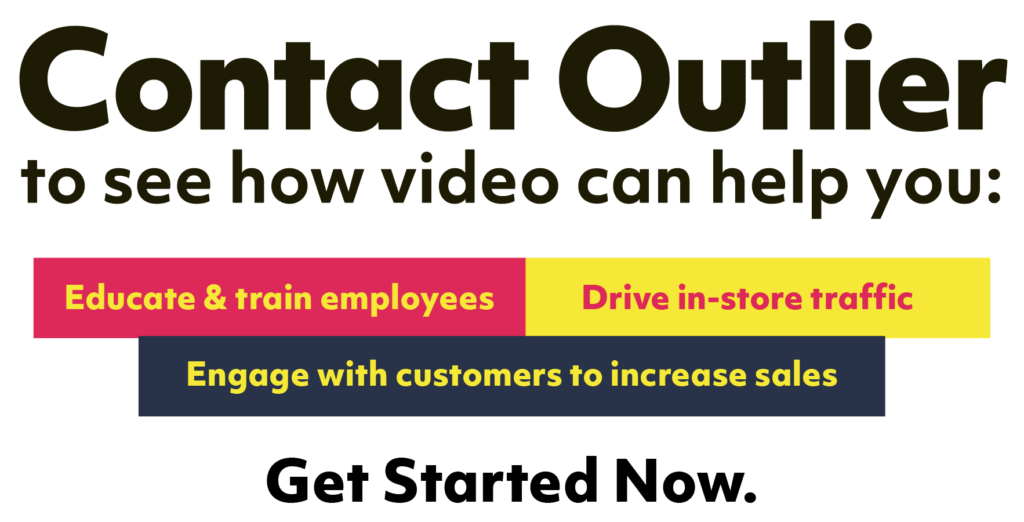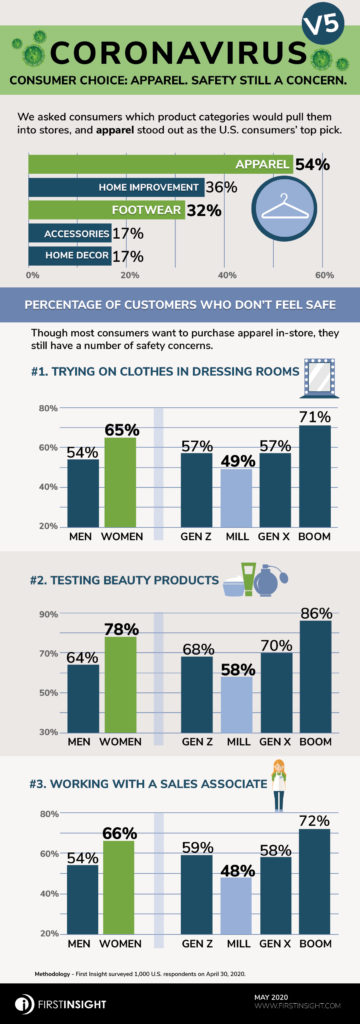Reopening Retail
Implementing Video for Customer & Employee Safety
This report covers meaningful statistics about in-store experience, consumer and employee health, and how video can improve the return of retail and flow of information as stores reopen.
On May 6, 2020 nearly 51% of USA stores were still closed. The hardest impacted sector for 2020 was apparel, with -25.5% growth YOY.
What’s Happening Now
Outlier reviewed the policies of 20 of the malls that have already opened in the United States: in Georgia, Ohio, and Indiana. Of these 20, we found that all had implemented Centers for Disease Control (CDC) guidelines for social distancing and implemented signage on doors, windows, and floors to encourage distancing.
Play spaces and water fountains remain closed in an effort to curb large group gatherings and minimize risk to mall employees and visitors. The goals behind these continued closures are clear:
Brands will need to find their own ‘new normal’, one that looks and feels quite different from the pre COVID-19 shopping experience.
The first round of post-COVID communication will by necessity focus on compliance, as this is the deciding factor on whether stores are allowed to reopen. Once doors are open, effective communication about compliance will be crucial to maintaining and improving employee and customer safety.
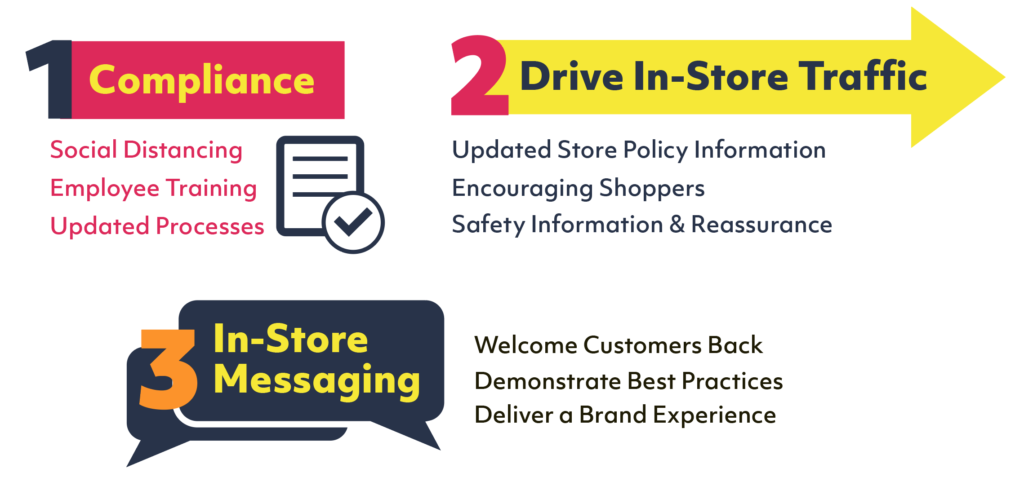
Reopening Retail:
Implementing Video for Customer & Employee Safety
Social distancing signage is crucial but barely scratches the surface of the many changes store managers will need to address with employees and customers.
Store staffing models will need to be adapted to increase distancing, as will the ways employees interface with consumers. Touch-free checkout technology will gain traction as stores work to reduce cash exchange and hand to hand contact. Shopping carts, dressing rooms, cash wraps and credit card/POS terminals will all require new operating procedures to ensure the safety of employees and consumers. Even shopping return processes will change as holding periods are placed on returned merchandise before items can be returned to the floor.
*Information above comes from retailcustomerexperience.com
Preparing the Store
Prior to reopening, management must prepare the store from a health and safety perspective as well as more traditional retail activities. Management will be responsible for educating retail associates and helping them prepare to help consumers through a safe shopping experience.
Topics to address include health and safety guidelines for employees and guests, personal and store hygiene reminders, and rules for deliveries if applicable.
*Information above comes from shrm.org
Employees need to feel it is safe to return to work. Ensuring they have access to and understand new policies is a crucial first step.
Best practice dictates managers consider any special needs and provide space for employees to ask questions and provide feedback about new policies.
Finally, management and employees need to be ready to welcome consumers back and help them understand new operating guidelines to ensure a positive experience for all parties.
95% of consumers want companies to implement physical protection and distancing measures to help keep them healthy.
*Information above from Prosper Insights via forbes.com
Driving Traffic to the Store
The second round of communication will take place outside of the store via social media and other brand channels.
This communication, directed towards consumers, must focus on:
In-Store Messaging
In-store messaging is needed to welcome consumers back to the store with information that puts the brand on full display.
The best mix of safety vs brand messaging will vary based on your physical location and the extent of changes being made. We do however caution against overly repetitive messaging that may be cause for shoppers to tune out to the larger message.
Rotating topics like employee health, safety, shopping experiences, and messages of ongoing solidarity is helpful. Don’t focus solely on COVID-19 and compliance in your in-store messaging. Your customers took a calculated risk to re-enter the store because they wish to enjoy the experience your brand is known for. Don’t be afraid to give them that experience.
It’s important to realize even with the best of intentions, your policies may create conflict between customers and your staff.4 This is a time to explore your brand values to find creative ways to make the process relatable and less frustrating for customers.
Airlines have given us an excellent example of the many different ways a brand can approach safety lessons.
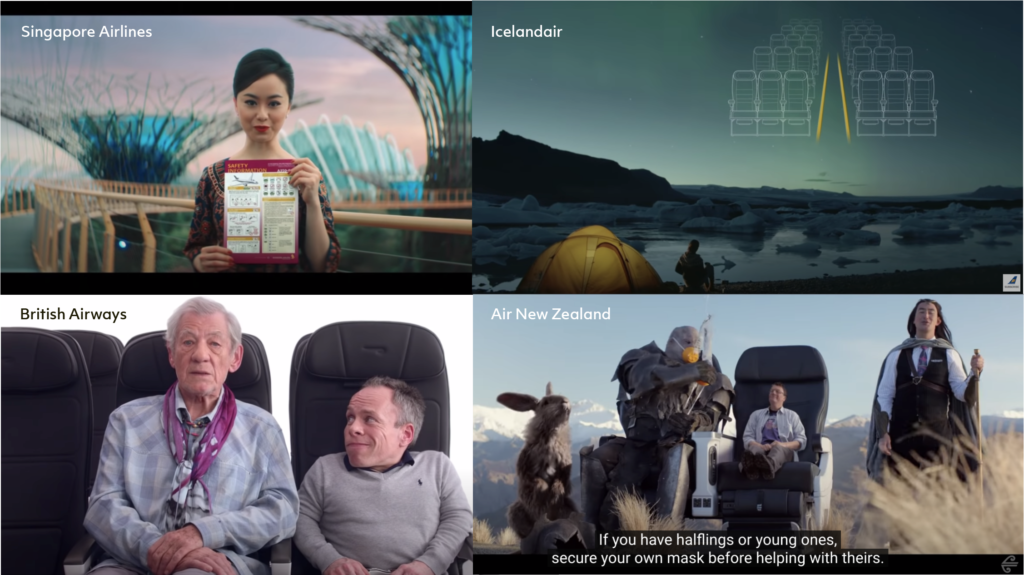
Why Video?
There are many reasons to choose video to assist with communicating with employees and customers.
Video allows you to share a lot of information in a short amount of time, provides clarity by showing how to perform tasks through demonstration, and improves engagement when delivered with accompanying materials.
Video allows you to clearly demonstrate best practices and show what new consumer interactions will look like to model real life experiences for employees and shoppers.
Stores are going from a high touch experience to very low touch interactions. Video allows you to create shared connections that are non-physical. To understand a person’s emotions, you usually look at their facial expressions. At a time when most people in the store, both employees and customers, will be wearing face masks these cues are conspicuously absent.
*Information above comes from psychologytoday.com
Video empowers you to communicate this emotional language to audiences safely. This, in addition to educating your team about positive body language, can help make up for some of the confusion created when facial expressions are covered.
Most importantly, video allows you to create a brand experience.
Inspiration
Airports have been a part of the everyday experience to communicate rules, policies and procedures and adhere to public safety for decades. The biggest changes happened post 9/11. Today you’ll find video screens on the approach to security, loudspeaker announcements, security guard announcements, as well as signage at the security checkpoints.
Don’t be the TSA. Be your brand.
This is a serious time but that does not mean you can’t have some fun with your messaging. Don’t be afraid to be creative and let your brand shine.
In-Store Video Solutions
- Educate retail associates and prepare them to help consumers through a safe and low friction process.
- Welcome consumers and help them understand what new operating guidelines exist and what their responsibilities are.
How Video Can Help with Driving Store Traffic
- News outlets are covering retail openings. Being creative with video can help you be unique in your reopening and drive more traffic to your store.
- Educate consumers about which new policies will be in place to avoid any surprise, shame, or embarrassment that shoppers may experience not knowing what the new policies are going to be.
- Given the phased opening approach many states are taking as well as the customer adoption process, we recommend stores utilize video to be transparent about how things are going. Use video to show consumers what’s happening and let early adopters lead the way for those who have more of a ‘wait and see’ attitude.
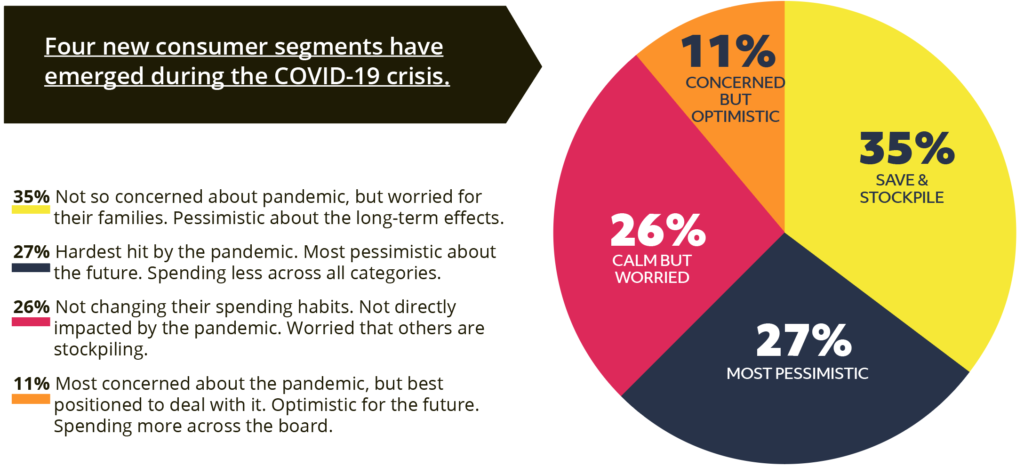
Video Packets
White Papers Home | Next White Paper

